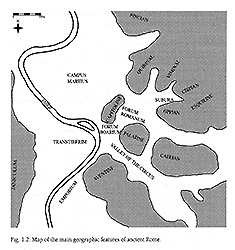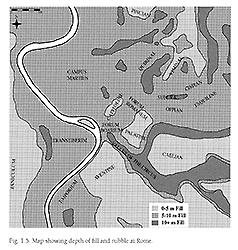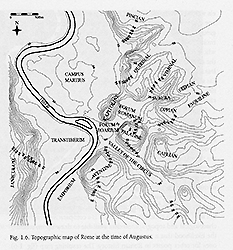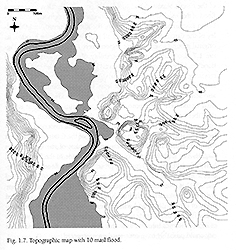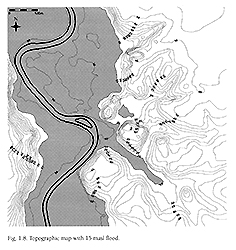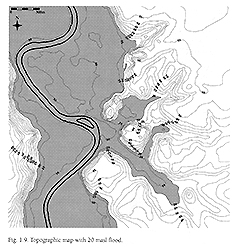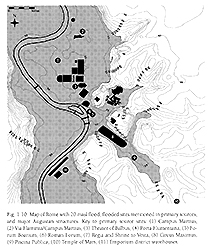Campus Martius
Topography and Floods of Ancient Rome
Among Augustus's extensive development of the city of Rome was a vast transformation of the Campus Martius. This floodplane was one of the areas of Rome most frequently immersed in several meters of water for prolonged times. Partly for this reason and partly because it was northwest of Rome's historic center, the Campus Martius had been used largely as a parade ground and sports field, etc. Major structures such as the Mausoleum of Augustus, Obelisk of Psametik II, and Ara Pacis, were not erected until Augustus' development of the area.
Following Augustus the ground level of the Campus Martius was gradually raised, partly by flood deposits and partly by new construction. Thus, though a surrounding brick wall was constructed to protect it, the Ara Pacis was eventually covered by soil and new construction, only to be gradually rediscovered beginning in the 16th century.
Scanned from Gregory S. Aldrete, Floods of the Tiber in Ancient Rome; Baltimore: Johns Hoplins University Press, 2007, maps by the author. Courtesy author; reproduced with appreciation.
- Pages:
- « previous
- 1
- 2
- 3
- 4
- next »
- Pages:
- « previous
- 1
- 2
- 3
- 4
- next »
